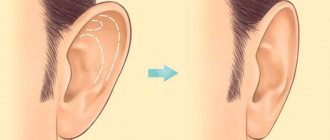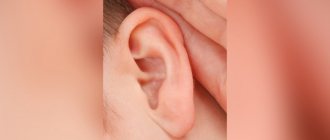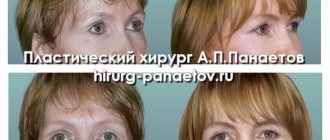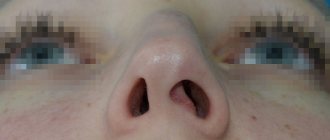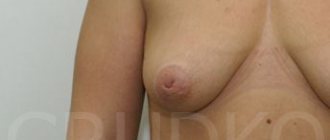What is thread otoplasty?
The problem of protruding ears is caused by the vertical twisting of the ears on the head, which is an anatomical feature in their location. Such a violation of the form, which aesthetically affects the beauty of the face, becomes a loss of self-confidence and a subject of ridicule, especially in childhood. Most of our patients who complain that they cannot pick up their hair, do the desired styling and wear a protruding ear cap can easily get rid of this deformity thanks to thread otoplasty. Thread otoplasty is an operation performed without an incision compared to classical otoplasty, which is performed by patients with protruding ears. Thread otoplasty was developed by our founder, surgeon Bulent Cihantimur, and has been used in the Estetik International clinics since 2010. The name thread otoplasty was given because of the use of medical thread, which is used to retract the auricle to an acceptable place.
Ear surgery to prevent them from sticking out
A very large number of psychological problems (complexes) are caused by imperfections in appearance and, in particular, protruding ears. In order to get rid of this discomfort once and for all, an operation is performed - otoplasty.
Ear surgery, how it is performed
Correction of the ears is usually performed under local anesthesia (in rare cases, general anesthesia is used). In both options, the patient does not feel pain. Otoplasty lasts from forty minutes to one and a half hours.
A plastic surgeon performs manipulations on the back of the ears. If the patient’s ears stick out, that is, protruding ears are observed, then the doctor excises a section of cartilage, and then shapes the auricle in such a way that it does not stick out and fits against the head. After which cosmetic stitches are applied. At the final stage, the patient is given a compression bandage.
Rehabilitation period
In the first days after correction of the auricle, slight swelling may occur. After just 3 days it will be almost invisible. Sutures are usually removed on the 7th day. Heavy physical activity should be limited in the first 2 weeks after otoplasty.
Surgery on ears to prevent them from sticking out – price
The cost of otoplasty in Moscow clinics, on average, ranges from 77,000 to 85,000 rubles.
The price of ear surgery performed by Dr. D.M. Saratovtsev is 75,000 rubles.
Correction of protruding ears - current issues
- Will there be scars after the operation?
Since the surgeon makes incisions behind the ears during the operation, the scars will be almost invisible. Plus, over time, these scars will become light and it will be very difficult to notice them.
- Does otoplasty affect hearing?
Correction of the ears does not affect hearing. In general, complications after this type of plastic surgery are extremely rare.
- Will it be necessary to have a second operation after some time?
The result of the operation does not require repeated surgery.
- What are the contraindications for ear surgery?
Contraindications include:
- blood clotting disorder;
— chronic diseases in the acute phase;
- oncological diseases;
- severe defects of internal organs and others.
Surgery on ears to prevent them from sticking out - reviews
Since childhood, I had a lot of complexes because my ears stuck out. In my youth I decided that I would grow up and have surgery to correct my ears. Last year I realized my dream. Now I have beautiful ears that fit close to my head. I began to feel much better psychologically.
Ildar R. G. Moscow
Photo source - Internet
Who can undergo thread otoplasty?
Thread otoplasty can be used by anyone suffering from ear asymmetry, protruding auricle, who does not want the risks that come with surgery, the use of general anesthesia and postoperative scars. Ear development is completed at 6 years of age. Therefore, we recommend performing thread otoplasty in preschool age, starting from 6 years, so that the child receives support in psychosocial development and does not suffer from loss of self-confidence. In addition, since with thread otoplasty the intervention is carried out on the outer part of the ear, hearing problems do not arise.
Otoplasty or ear plastic surgery is a procedure to surgically correct the shape of the ears. Due to the complexity of the embryonic anlage and anatomical structure, there are many malformations of the external ear.
Anatomical structure of the outer ear
Most often people seek otoplasty for protruding ears (protruding ears). This is a congenital cosmetic defect in which the auricle is either not bent enough along the antihelix, or is more distant from the head than usual.
The absence of antihelix formation between 12-16 weeks of embryonic development is a congenital hereditary autosomal recessive defect. Patients often worry about this pathology and are targets of ridicule, which can lead to decreased self-esteem, especially in childhood.
Therefore, correction of a congenital defect has not only cosmetic, but also psychological aspects.
The cause of otoplasty can also be asymmetry, ruptures of the lobe or its stretching, Darwin's tubercle, satyr's ear injury, congenital underdevelopment or absence of part of the ear.
The objectives of otoplasty are:
- Recreating the natural contour of the ear
- Achieving symmetry
- Adequate distance of the lateral border of the helix from the mastoid process (about 12 mm)
- Restoring the shape of the antihelix without sharp corners and edges
- Invisible scars
- Long-term results
- Preservation of the postauricular sulcus
There are many techniques for eliminating protruding ears, which are based on one or another method of modifying the ear cartilage to give the proper shape to the ear. This can include removing pieces of cartilage, folding it into a tube with sutures, heating it with a laser for bending, etc. The least traumatic methods of otoplasty are most widespread, since the most common patients are children from 7 to 10 years old.
Fig. 2 Very traumatic otoplasty with removal of part of the cartilage and rolling it into a tube. As a result, the natural relief of the ear is disrupted, it is excessively pressed to the head, the sharp edges of the cartilage are visible, and the postauricular groove is lost. The operation was performed by a different surgeon
Fig. 3. Traumatic otoplasty with intersection of cartilage and folding it into a tube. The crossed edge of the cartilage is contoured at the back. The lobe and the upper pole are not pressed. The ear is shaped like an hourglass. The operation was performed by a different surgeon
The most popular otoplasty technique is aimed at increasing the pliability of cartilage by making incisions on its surface. This leads to the release of internal tension in the cartilage and its rotation in the required direction. When performing parallel incisions with a scalpel, visual control and wide access to the anterior surface of the cartilage in the projection of the antihelix should be provided. Wide access means more trauma.
In addition, making cuts with a scalpel requires special care, since you can cut through the cartilage, which can lead to fractures of the cartilage, contouring its sharp edges under the thin skin of the auricle. Such an annoying cosmetic defect is very noticeable and difficult to eliminate.
Fig.4 Contouring of the sharp edges of the cartilage during its through dissection. The operation was performed by a different surgeon
Author's method of otoplasty (A.S. Guryanov)
Publications of the author's method of otoplasty.
To eliminate these shortcomings, an original otoplasty technique has been developed that does not require large incisions. Notches on the cartilage are made with an original thin instrument through a puncture. Such a knife cannot cut through cartilage tissue and gives a predictable result
Author's otoplasty technique
Preoperative markings have been applied. Incisions are made on the anterior surface of the cartilage only through a post-auricular puncture.
View before and immediately after surgery
Even in children, this operation can be performed under local anesthesia, since it is easily tolerated, quick and less traumatic.
Fig.5 Before and 2 weeks after author’s otoplasty
Performing the operation before 6 years, when the cartilage reaches adequate density, is undesirable.
Adults have less elasticity of the ear cartilage and calcification, making the cartilage fragile and traditional otoplasty more difficult. The author's otoplasty method easily copes with this problem.
Rice. 6. Before and 2 weeks after author’s otoplasty. Natural and smooth contours, quick recovery.
After surgery, you will need to wear an elastic bandage for 1 week. The patient and his parents should remember that postoperative care is as important as surgery, especially in younger patients.
Advantages of thread otoplasty
Thread otoplasty has many advantages. In particular:
• Quite easy to use non-surgical technique • Absence of possible risks associated with surgery • Completion of the operation within 10-15 minutes (we have patients in whom thread otoplasty lasted 9.5 minutes) • Fairly fast recovery process • No bleeding due to the intervention cartilage tissue and micro-holes • No incision due to placement of threads using a needle and micro-holes • Instant return to social life
FAQ
When can otoplasty be done?
Correction can be performed from the age of 5: by this period, the size of the ears is about 85% of the final figure. In addition, surgery performed at this age will help the child avoid stress caused by the reactions of peers. However, ear surgery is performed on patients of any age. The criterion is the patient's desire and consent to the operation.
Features of rehabilitation after otoplasty
Recovery after surgery takes about 7-10 days. In the first days, pain may appear, which can be easily relieved with conventional painkillers. Swelling after surgery goes away on its own. On days 5-7, the stitches are removed. One of the conditions of the rehabilitation period is wearing a compression bandage, which fixes the ear in the desired position, preventing tissue displacement until final healing. In the first 3-5 days it should be worn constantly, then the bandage is worn only at night. In the first week, it is better to sleep only on your back. During the entire rehabilitation period, you should not wear glasses or heavy ear jewelry. You can resume sports activities 3 weeks after surgery.
Are there criteria for assessing the type of ear?
There are no strict criteria by which to determine the position and size of the ears. But it is generally accepted that the angle between the auricle and the head should be 30°, and the line of the shell should be parallel to the cheek.
Is it possible to lose fixation after thread otoplasty?
Thread otoplasty, created by our founder, surgeon Bulent Cihantimur, and used in the structure of our institution since 2010, has been used to correct ear deformities in thousands of our patients and is a fairly effective method that has given extremely positive results. Failure of fixation after thread otoplasty was observed in only 1% of our patients and was found to be caused by undated blows received after the procedure. The procedure can be easily repeated with corrective treatment.
Complications after otoplasty
Any surgical intervention does not exclude the occurrence of complications. Ears after otoplasty require medical care and strict adherence to recommendations. Most often, complications after otoplasty are quite predictable and resolve in the early stages. But more serious consequences are also possible. Failure to wear a compression bandage on the head after otoplasty may result in large bruises that will put pressure on the tissue. The result is disastrous - the appearance of necrosis and atrophy. Therefore, only a doctor should decide how long to wear a bandage after otoplasty. Failure to comply with hygiene standards during the postoperative period of otoplasty contributes to the appearance of bacterial infection. The appearance of an abscess, increased temperature, and increased pain require immediate consultation with your doctor. Complications after otoplasty are rare, however, it is necessary to fulfill all the doctor’s requirements, attend prescribed procedures, and maintain a sterile regime.

